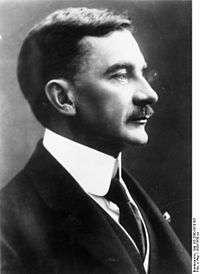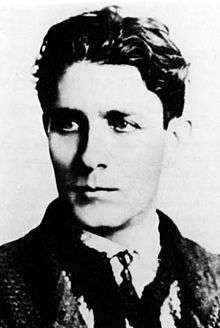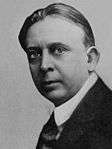Romanian general election, 1937
| | |||||||||||||||||||||||||||||||||||||||||||||||||||||||||||||||||||||||||||||||
| |||||||||||||||||||||||||||||||||||||||||||||||||||||||||||||||||||||||||||||||
| |||||||||||||||||||||||||||||||||||||||||||||||||||||||||||||||||||||||||||||||
General elections were held in Romania in December 1937.[1] The Chamber of Deputies was elected on 20 December, whilst the Senate was elected in three stages on 22, 28 and 30 December.[1] The National Liberal Party remained the largest party, winning 152 of the 387 seats in the Chamber of Deputies and 97 of the 112 seats in the Senate, although it lost its majority in the Chamber.[2] The party's unexpectedly poor showing (failing to obtain 40% of the vote, which would have automatically guaranteed them a large parliamentary majority) meant they could not form a coalition with either their arch-rivals the National Peasants' Party or with the Iron Guard's Everything for the Country Party, King Carol II invited the poet Octavian Goga to form a government, despite the fact that his National Christian Party finished fourth and had an avowedly anti-Semitic platform.
Unlike all previous Romanian elections organised by partisan governments, the 1937 result did not provide the governing party--in this case, the National Liberals--with an outright majority. As it turned out, this would be the last election held under the nominally democratic 1926 electoral law, and the last free election of any sort until 1990.[3] It was also the last election held under universal male suffrage.
At Goga's request, Carol dissolved parliament on 18 January 1938 with a view toward holding new elections that winter. However, in February, Carol suspended the Constitution, canceled the elections, and instituted a royal dictatorship. By the next elections held under the 1923 Constitution, in 1946, Romania had passed through three dictatorships and a fourth, Communist one was rapidly consolidating.

Campaign
During the first round, clashes occurred at Orhei and Târgu Mureş, killing four and leading to 300 arrests. After the vote, the Electoral Commission surprised observers by deciding, in its allocation of seats by proportional representation, to count the entire country as one district, rather than use smaller districts, as had been the norm.
Results
| Party | Chamber | Senate | ||||||
|---|---|---|---|---|---|---|---|---|
| Votes | % | Seats | +/– | Votes | % | Seats | +/– | |
| National Liberal Party | 1,103,353 | 36.5 | 152 | –148 | 97 | –8 | ||
| National Peasants' Party | 626,612 | 20.7 | 86 | +57 | 10 | +10 | ||
| Everything for the Country Party | 478,378 | 15.8 | 66 | New | 4 | New | ||
| National Christian Party | 281,167 | 9.3 | 39 | +21 | 0 | 0 | ||
| Magyar Party | 136,139 | 4.5 | 19 | +11 | 2 | –1 | ||
| National Liberal Party-Brătianu | 119,361 | 3.9 | 16 | +6 | 0 | 0 | ||
| Radical Peasants' Party | 69,198 | 2.3 | 9 | +3 | 0 | 0 | ||
| Agrarian Union Party | 52,101 | 1.7 | 0 | –5 | 0 | 0 | ||
| Jewish Party | 43,681 | 1.4 | 0 | 0 | 0 | 0 | ||
| German Party | 43,612 | 1.4 | 0 | New | 0 | New | ||
| Social Democratic Party | 28,840 | 1.0 | 0 | 0 | 0 | 0 | ||
| People's Party | 25,567 | 0.8 | 0 | 0 | 0 | 0 | ||
| Traders Council | 1,219 | 0.0 | 0 | 0 | 0 | 0 | ||
| Other parties | 16,912 | 0.6 | 0 | – | 0 | – | ||
| Invalid/blank votes | 45,555 | – | – | – | – | – | – | |
| Total | 3,071,695 | 100 | 387 | 0 | 113 | +5 | ||
| Registered voters/turnout | 4,649,163 | 66.1 | – | – | – | – | ||
| Source: Sternberger et al.,[4] Nohlen & Stöver | ||||||||
References
- 1 2 Nohlen, D & Stöver, P (2010) Elections in Europe: A data handbook, p1591 ISBN 978-3-8329-5609-7
- ↑ Nohlen & Stöver, p1610-1611
- ↑ Reaves, Joseph A. Romanians Hope Free Elections Mark Revolution's Next Stage. Chicago Tribune, 1990-03-30.
- ↑ Dolf Sternberger, Bernhard Vogel, Dieter Nohlen & Klaus Landfried (1978) Die Wahl der Parlamente: Band I: Europa, Zweiter Halbband, pp1062–1064
- Kurt W. Treptow (1996) "Alegerile din decembrie 1937 şi instaurarea dictaturii regale" in Romania and World War II, Centrul de Studii Româneşti, Iaşi (Romanian)
- "4 Die as Rumania Votes", The New York Times, 21 December 1937, p18
- "Cabinet Aims to Rule Rumania", The New York Times, 24 December 1937, p4



